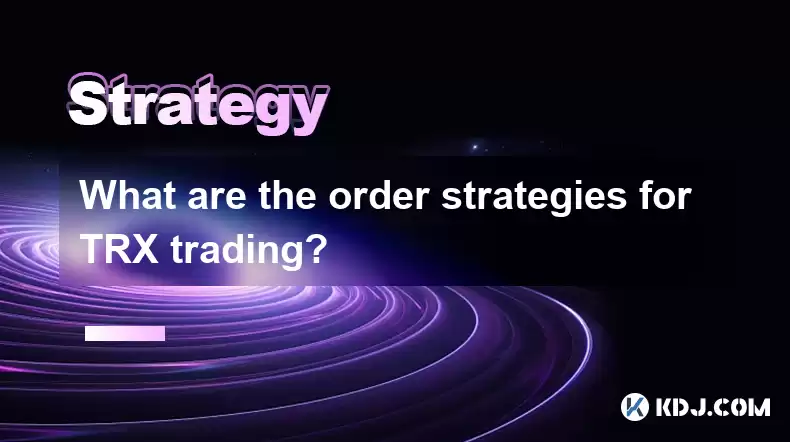-
 Bitcoin
Bitcoin $115100
1.27% -
 Ethereum
Ethereum $3675
2.71% -
 XRP
XRP $2.995
1.45% -
 Tether USDt
Tether USDt $1.000
0.02% -
 BNB
BNB $769.8
2.64% -
 Solana
Solana $168.0
3.25% -
 USDC
USDC $0.9999
-0.01% -
 TRON
TRON $0.3371
1.48% -
 Dogecoin
Dogecoin $0.2051
3.36% -
 Cardano
Cardano $0.7394
2.30% -
 Hyperliquid
Hyperliquid $38.15
0.42% -
 Stellar
Stellar $0.3966
-0.36% -
 Sui
Sui $3.486
2.93% -
 Chainlink
Chainlink $16.72
2.52% -
 Bitcoin Cash
Bitcoin Cash $568.0
4.36% -
 Hedera
Hedera $0.2440
2.59% -
 Ethena USDe
Ethena USDe $1.001
0.04% -
 Avalanche
Avalanche $22.16
2.06% -
 Litecoin
Litecoin $119.1
-0.73% -
 UNUS SED LEO
UNUS SED LEO $8.991
0.04% -
 Toncoin
Toncoin $3.232
-0.39% -
 Shiba Inu
Shiba Inu $0.00001233
2.82% -
 Uniswap
Uniswap $9.717
2.53% -
 Polkadot
Polkadot $3.664
1.85% -
 Dai
Dai $1.000
0.01% -
 Monero
Monero $281.2
-3.89% -
 Bitget Token
Bitget Token $4.350
1.55% -
 Cronos
Cronos $0.1428
5.07% -
 Pepe
Pepe $0.00001050
3.68% -
 Aave
Aave $262.3
3.54%
What are the order strategies for TRX trading?
TRX trading involves various strategies like market, limit, stop, trailing stop, iceberg, and TIF orders, each with unique benefits and risks tailored to different trading goals.
Apr 20, 2025 at 07:21 pm

Trading TRX, the native cryptocurrency of the TRON blockchain, involves various strategies that traders can employ to maximize their returns and minimize risks. Understanding these order strategies is crucial for anyone looking to trade TRX effectively. This article will explore several key order strategies for TRX trading, providing detailed insights into each approach.
Market Orders
Market orders are the most straightforward type of order where a trader buys or sells TRX at the current market price. This strategy is ideal for traders who prioritize speed over price, as it ensures the order is executed immediately.
- Execution: To place a market order, open your trading platform, navigate to the TRX trading pair, and select 'Buy' or 'Sell' with the option for 'Market'. Enter the amount of TRX you wish to trade, and confirm the order.
- Advantages: Market orders guarantee immediate execution, making them suitable for volatile markets where prices can change rapidly.
- Disadvantages: You have no control over the execution price, which can lead to slippage, especially in highly volatile markets.
Limit Orders
Limit orders allow traders to set a specific price at which they want to buy or sell TRX. This strategy is useful for those who want more control over the price at which their order is executed.
- Execution: To set a limit order, go to your trading platform, select the TRX trading pair, and choose 'Buy' or 'Sell' with the 'Limit' option. Enter the desired price and the amount of TRX, then confirm the order.
- Advantages: Limit orders give you control over the price, potentially allowing you to buy low or sell high.
- Disadvantages: There's no guarantee that your order will be filled if the market doesn't reach your specified price.
Stop Orders
Stop orders, also known as stop-loss orders, are used to limit potential losses or to protect profits. A stop order becomes a market order once the TRX price reaches a specified level.
- Execution: To place a stop order, access your trading platform, select the TRX trading pair, and choose 'Stop' or 'Stop-Loss'. Enter the stop price and the amount of TRX, then confirm the order.
- Advantages: Stop orders can help manage risk by automatically selling TRX if the price drops to a certain level.
- Disadvantages: Similar to market orders, stop orders can suffer from slippage, especially in fast-moving markets.
Trailing Stop Orders
Trailing stop orders are a variation of stop orders that allow traders to set a stop price at a fixed percentage or dollar amount below the market price. The stop price adjusts as the market price moves in your favor.
- Execution: To set a trailing stop order, go to your trading platform, select the TRX trading pair, and choose 'Trailing Stop'. Enter the trailing amount (percentage or dollar value) and the amount of TRX, then confirm the order.
- Advantages: Trailing stop orders can help lock in profits while allowing the position to remain open as the market moves favorably.
- Disadvantages: If the market price fluctuates rapidly, the trailing stop might be triggered prematurely.
Iceberg Orders
Iceberg orders are used to buy or sell large quantities of TRX without revealing the full order size to the market. This strategy helps to minimize market impact and avoid price manipulation.
- Execution: To place an iceberg order, access your trading platform, select the TRX trading pair, and choose 'Iceberg' or a similar option. Enter the total order size and the visible portion size, then confirm the order.
- Advantages: Iceberg orders can be useful for large traders looking to execute orders without causing significant price movements.
- Disadvantages: The complexity of setting up and managing iceberg orders can be a challenge for some traders.
Time in Force Orders
Time in Force (TIF) orders allow traders to specify the duration an order remains active. Common TIF options include Day, Good Till Canceled (GTC), and Immediate or Cancel (IOC).
- Execution: To set a TIF order, go to your trading platform, select the TRX trading pair, and choose the desired TIF option (e.g., 'Day', 'GTC', 'IOC'). Enter the order details and confirm.
- Advantages: TIF orders provide flexibility in managing how long an order remains active, which can be crucial for different trading strategies.
- Disadvantages: Misunderstanding the TIF options can lead to unintended consequences, such as orders remaining active longer than intended.
Each of these order strategies offers unique benefits and drawbacks, and the choice of which to use depends on the trader's goals, risk tolerance, and market conditions. By understanding and effectively utilizing these strategies, traders can enhance their TRX trading experience and potentially improve their trading outcomes.
Frequently Asked Questions
Q: Can I use multiple order types in a single trading session for TRX?
A: Yes, traders often use multiple order types within a single trading session to manage their positions effectively. For instance, you might use a limit order to enter a position and a stop order to protect against significant losses.
Q: How do I choose the right order type for TRX trading?
A: The choice of order type depends on your trading strategy, risk tolerance, and market conditions. If you need immediate execution, a market order might be suitable. For more control over the execution price, a limit order could be better. Consider your goals and the current market volatility when deciding.
Q: What are the risks of using stop orders for TRX trading?
A: The main risk of using stop orders is slippage, where the execution price differs from the stop price due to rapid market movements. Additionally, if the market experiences a temporary spike or dip, a stop order might be triggered unnecessarily.
Q: Are iceberg orders available on all trading platforms for TRX?
A: No, not all trading platforms support iceberg orders. It's essential to check with your trading platform to see if this order type is available for TRX trading.
Disclaimer:info@kdj.com
The information provided is not trading advice. kdj.com does not assume any responsibility for any investments made based on the information provided in this article. Cryptocurrencies are highly volatile and it is highly recommended that you invest with caution after thorough research!
If you believe that the content used on this website infringes your copyright, please contact us immediately (info@kdj.com) and we will delete it promptly.
- Avalanche vs. Ruvi AI: Daily Sales Tell a Story of Crypto Disruption
- 2025-08-07 06:29:35
- DeSoc: The Crypto to Buy Now for a Decentralized Future (and Maybe 43x Gains!)
- 2025-08-07 06:50:16
- Meme Coins in August 2025: Riding the Rally Wave
- 2025-08-07 06:56:08
- Big Whales, Altcoins, and Heavy Transactions: What's Moving the Crypto Market?
- 2025-08-07 06:29:35
- TRX, RUVI, and CoinMarketCap: What's Buzzing in the Crypto Sphere?
- 2025-08-07 05:31:17
- Cryptos Primed for 5x Gains? Ozak AI Spotlights Hot Projects
- 2025-08-07 05:41:42
Related knowledge

How to avoid common crypto investment mistakes?
Jul 13,2025 at 01:35am
Understanding the Risks of Crypto InvestmentInvesting in cryptocurrency can be highly rewarding, but it also comes with significant risks. One of the ...

What is a long-short crypto strategy?
Jul 15,2025 at 10:56am
Understanding the Basics of a Long-Short Crypto StrategyA long-short crypto strategy is an investment approach where traders simultaneously take long ...

What is a long-short crypto strategy?
Jul 11,2025 at 01:28pm
Understanding the Basics of Long-Short Crypto StrategyA long-short crypto strategy is an investment approach where traders take both long and short po...

How to use the RSI indicator for crypto?
Jul 12,2025 at 03:56pm
Understanding the RSI Indicator in Cryptocurrency TradingThe Relative Strength Index (RSI) is a momentum oscillator used to measure the speed and chan...

Is copy trading a good strategy for crypto beginners?
Jul 12,2025 at 08:28am
Understanding Copy Trading in the Cryptocurrency MarketCopy trading is a strategy where novice traders replicate the trades of experienced investors a...

How to build a crypto portfolio with $1000?
Jul 13,2025 at 08:14pm
Understanding the Basics of Cryptocurrency InvestmentBuilding a crypto portfolio with $1000 starts with understanding the fundamentals of cryptocurren...

How to avoid common crypto investment mistakes?
Jul 13,2025 at 01:35am
Understanding the Risks of Crypto InvestmentInvesting in cryptocurrency can be highly rewarding, but it also comes with significant risks. One of the ...

What is a long-short crypto strategy?
Jul 15,2025 at 10:56am
Understanding the Basics of a Long-Short Crypto StrategyA long-short crypto strategy is an investment approach where traders simultaneously take long ...

What is a long-short crypto strategy?
Jul 11,2025 at 01:28pm
Understanding the Basics of Long-Short Crypto StrategyA long-short crypto strategy is an investment approach where traders take both long and short po...

How to use the RSI indicator for crypto?
Jul 12,2025 at 03:56pm
Understanding the RSI Indicator in Cryptocurrency TradingThe Relative Strength Index (RSI) is a momentum oscillator used to measure the speed and chan...

Is copy trading a good strategy for crypto beginners?
Jul 12,2025 at 08:28am
Understanding Copy Trading in the Cryptocurrency MarketCopy trading is a strategy where novice traders replicate the trades of experienced investors a...

How to build a crypto portfolio with $1000?
Jul 13,2025 at 08:14pm
Understanding the Basics of Cryptocurrency InvestmentBuilding a crypto portfolio with $1000 starts with understanding the fundamentals of cryptocurren...
See all articles

























































































